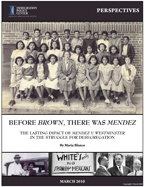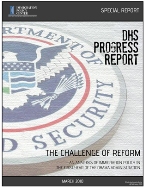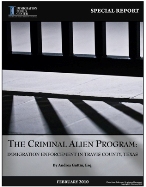 By Maria Blanco
By Maria Blanco
Years before the U.S. Supreme Court ended racial segregation in U.S. schools with Brown v. Board of Education, a federal circuit court in California ruled that segregation of school children was unconstitutional—except this case involved the segregation of Mexican American school children. The Ninth Circuit Court of Appeals reached this historic decision in the case of Mendez v. Westminster in 1947—seven years before Brown. Historic in its own right, Mendez was critical to the strategic choices and legal analysis used in arguing Brown and in shaping the ideas of a young NAACP attorney, Thurgood Marshall. Moreover, the Mendez case—which originated with LULAC but benefited from the participation of the NAACP—also symbolized the important crossover between different ethnic and racial groups who came together to argue in favor of desegregation.
From a legal perspective, Mendez v. Westminster was the first case to hold that school segregation itself is unconstitutional and violates the 14th Amendment. Prior to the Mendez decision, some courts, in cases mainly filed by the NAACP, held that segregated schools attended by African American children violated the 14th Amendment’s Equal Protection Clause because they were inferior in resources and quality, not because they were segregated. Read more...
Published On: Thu, Mar 25, 2010 | Download File





